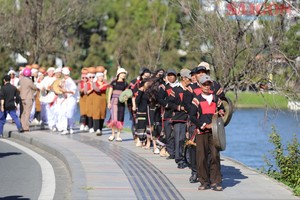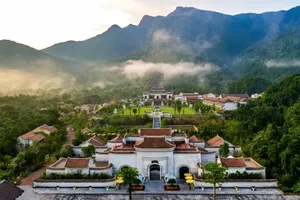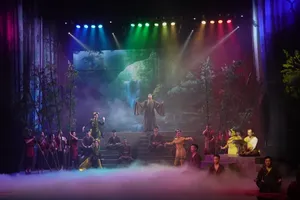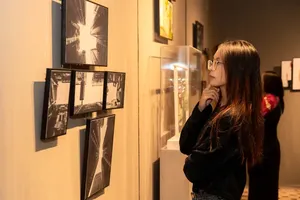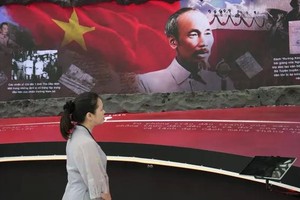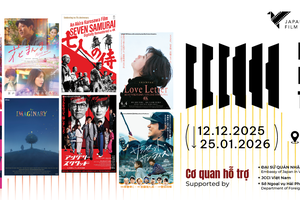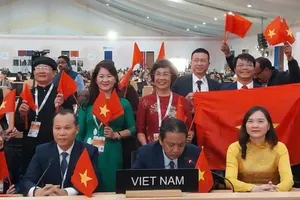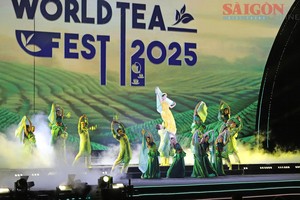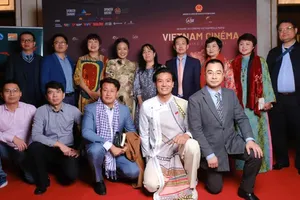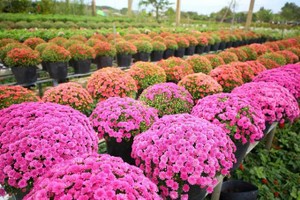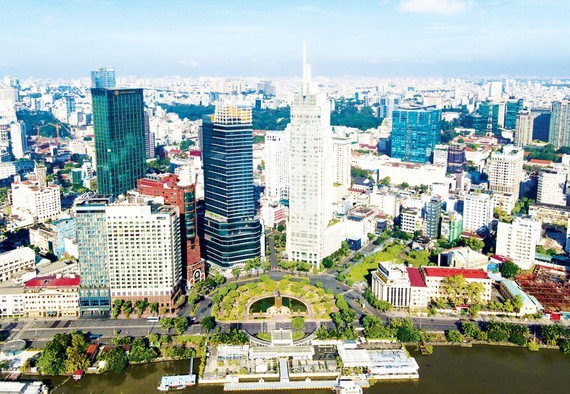
At 4 p.m. at Bach Dang Wharf Park, a photographer is trying to capture some more stunning sunset moments for a bride and groom. He shared that this new park is the favorite choice of many couples thanks to its artistic beauty and distance convenience.
27-year-old Nguyen Phuoc Vuong, a medical employee, also loves to shot Saigon River from this new angle, saying that the park has both charming garden miniatures and a bustling waterbus station, which can satisfy people.
Possessing many rivers, large and small, HCMC has a great potential to develop public parks and community space alongside river banks. With proper investment, this bustling dockyard scene will become the city identity and will attract the attention of both young residents as well as tourists.
“The establishment of green spaces along rivers can reduce water pollution while raising the public’s awareness about protecting the environment in order to maintain charming check-in locations not inferior to any foreign places”, said Vuong.
26-year-old Phan Ba Loc, working in the communications field, suggested that newly built parks should be cool and clean, with proper parking lots, public facilities and garden miniatures, city symbols for entertainment purposes.
The introduction of Bach Dang Wharf Park has been wholeheartedly supported by the community as a way to develop the riverside economy.
Besides that, other cultural activities have been held in public spaces of HCMC over the past three months. The program ‘Street Arts’, organized at the address of 257 Hoang Van Thu Street in Tan Binh District was able to attract a great number of young participants.
Chairman of the HCMC Fine Arts Association Nguyen Xuan Tien once commented that HCMC is a cosmopolitan place, where different cultures meet and integrate. Therefore, the city has launched the project ‘Strategies for Cultural Development in HCMC until 2030’ to boost the growth of the cultural industry via investments in major sports and cultural construction projects.
The establishment of public spaces associated with the city identity is not only a placemaking activity but also a method to encourage the development of the service sector. For instance, a mural street having souvenir booths and coffee shops possesses a great potential to attract both tourists and local residents.
Obviously, the recent focus of HCMC on arts and culture in community spaces has fostered the explosive growth of street arts here, contributing to reflecting the rich spiritual life of local people and creating the particular city identity.
“To obtain a specific and systematic picture of the river resource in HCMC and neighboring localities, it is necessary to conduct a large-scaled study where the identification of potential river values must go along with the awareness about preserving them. We need an inter-disciplined approach among the fields of ecology, archaeology, culturology, history, tourism, economics and urbanism in this research, along with learning from the experience of other nations in the Southeast Asian and the world”, said Dean of the Culturology Department of the HCMC University of Social Sciences and Humanities Nguyen Ngoc Tho.

